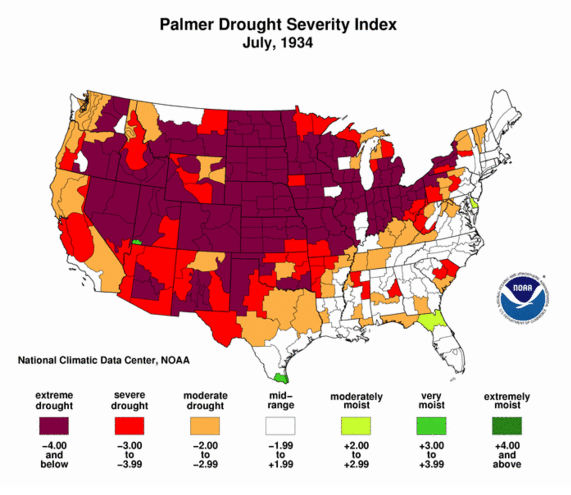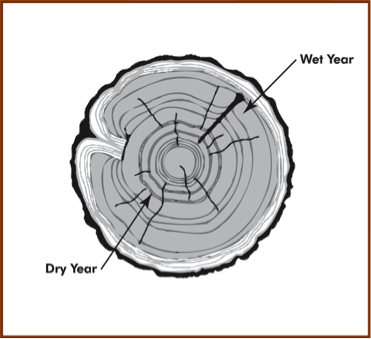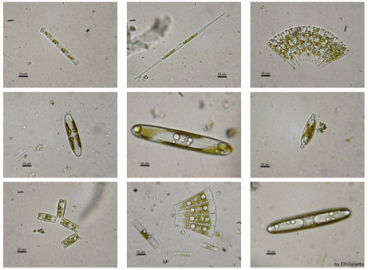By Kelsey
We are all familiar with the images. The barren landscape. Brown, dead vegetation spanning as far as the eye can see. Lakes and rivers shrinking in size, their relict banks cracked and dry.
These dryspells or droughts can last from days to years and they occur when a region receives below average precipitation. Droughts are generally said to arise from insufficient precipitation amounts over an extended period of time. This shortage in precipitation occurs typically in one season or more, and results in a water shortage for an environmental region. The impact of the drought arises from the interaction between the natural events (less precipitation than expected) and the demand on the water supply (both from the environment and humans), which can exacerbate the impacts of the drought. Because of these factors that can influence the magnitude of the drought, they need to be taken into consideration when working to define a drought (National Drought and Mitigation Center). Frequently the definitions can vary from location to location as certain areas are less adapted to low water conditions than others. But it can also dependent on timing. For example, in the desert a month without rain doesn’t have the same effect as it would in the rainforest. However, if the month without rain in the desert came during the period designated as the rainy season, the impacts would be drastically different.
Depending on how long these dryspells last there can be a huge impact on the ecosystem and economies associated with them. One prime example is the Dust Bowl. The drought associated with the Dust Bowl was the worst drought recorded in U.S. history. It occurred between 1930 and 1940 with 4 distinct drought events in 1930-1931, 1934, 1936, and 1939-1940 (Riebsame et al. 1991). The impacts of these drought events were widespread. The dust bowl which was borne out of these droughts covered more than 75 percent of the country and severely affected 27 states. It is difficult to estimate the economic cost of this event, but overestimates state it resulted in a relative economic loss of $2.4 billion (not adjusted for inflation) (Hornbeck 2012). While the drought was only partially to blame for the Dust Bowl (improperly managed land was also to blame), it is clear the economic cost of droughts can be severe.

Figure 1: Palmer Drought Severity Index of the United States during one of the droughts associated with the Dust Bowl. Figure from pbs.org, produced by NOAA.
As a result, it is important to understand how often droughts occur, and their level of severity for a given region. And the past provides a great record. Depending on how far back you want to explore there are different tools available for drought reconstruction.
The most obvious and direct way to look at drought is to examine precipitation records. These are the most basic way to look at how precipitation has changed in a region over a period of time. The National Drought and Mitigation Center provides a great tool for exploring past drought in the United States, but the data is limited as the records only go back about 100 years. The Palmer Drought Severity Index is also a great way to assess drought and uses both precipitation and temperature records (Figure 1). It can also be reconstructed for past climate conditions, but requires tree ring data as a climate proxy.

Figure 2. Drawing of a cross section of a tree trunk with tree rings depicting wetter or drier years. Image from archaeologysouthwest.org
A proxy is a preserved item that acts as a ‘natural archive,’ capable of telling us something about climate in the past. These proxies can be biological (pollen, diatom, tree rings, etc.) or physical (dust, trapped air bubbles, etc.). Scientists use these proxies to reconstruct what the climate was like in the location the proxies were found. I will go into depth about tree rings, pollen, and diatoms and explain how they can be used to determine if a drought occurred at certain times in the past.
Most of us are familiar with tree rings. We have been taught that you can tell the age of a tree by counting the number of rings. What may not be as well known is that these rings can also tell us something about the climate during the life of the tree. This is possible because typically the rings are wider during wetter years and years with longer growing seasons (Figure 2). If a drought occurred, typically you observe a narrower band or if a drought occurred midseason you would observe multiple bands in one season. In most cases these tree ring records go back approximately 300 years, although some extend back thousands of years. When looking for longer records, pollen and diatoms can help.
To obtain diatom and pollen records a sediment core is taken from a lake. The cores are obtained using a specially designed tool to take a continuous vertical portion of the sediment from the surface of the lake bottom to even greater depths below. When pulled to the surface the core(s) will provide a continuous history of the lake from the present to x number of years ago. The cores are typically taken in 0.5m to meter increments depending on how far back in time the scientist wants to go. Dates are obtained for certain depths in the core using carbon (based on preserved plant material) or lead dating (from the sediments themselves). Both of these dating methods will help to infer when the diatom or pollen species were present.
Pollen can provide additional information that tree rings cannot about past climates. Specifically, a pollen record can provide information about what species were present in an area and in what abundance. With this information scientists can infer what the landscape may have looked like (forest, savannah, etc). Additionally, scientists can look at the environmental preferences of each species. This can help infer if the conditions were arid, cold, wet, and/or warm as some plants are more resilient than others.
Diatoms provide similar information to pollen, although the diatoms themselves provide specific information about what the climate in the lake was like at a given time. (Figure 4) Diatom species, like pollen, have known preferred conditions. Some prefer shallower water (an abundance of these may indicate drought) while some prefer deep water (suggesting wetter conditions).
In conclusion, each of these proxies can provide important information about past climates and can be used to determine if any events like the Dust Bowl have occurred in the past. Knowing more about the past can help us better understand what future climates might be like and help us prepare for the climate changes the Earth is experiencing right now.
References
Hornbeck R. 2012. The Enduring Impact of the American Dust Bowl: Short- and Long-Run Adjustments to Environmental Catastrophe. American Economic Review 102(4): 1477-1507.
National Drought and Mitigation Center. http://droughtmonitor.unl.edu/Home.aspx
NOAA Paleoclimatology Program. http://www.ncdc.noaa.gov/paleo
Riebsame, W. E., S. A. Changnon, Jr., and T. R. Karl. 1991. Drought and Natural Resources Management in the United States. Boulder, CO: Westview Press.


This was a really excellent read, and a nice overview of a few important proxies. What’s even scarier is to think that some of the mid-Holocene droughts were much more severe than the Dust Bowl!
Very interesting! I wonder if these different proxies for reconstructing drought events have been consolidated into one graph or map of global drought history..Much in the same way that arctic ice cores and oxygen isotope data are used to understand historical trends in climate.
By causing stress to some organisms, droughts can also introduce more opportunities for pathogens. Are there any proxies to look at diseases in trees and compare them to records of drought?
I wonder if it’s possible to predict droughts in the present by looking at climatic records in the past from right before a drought event.